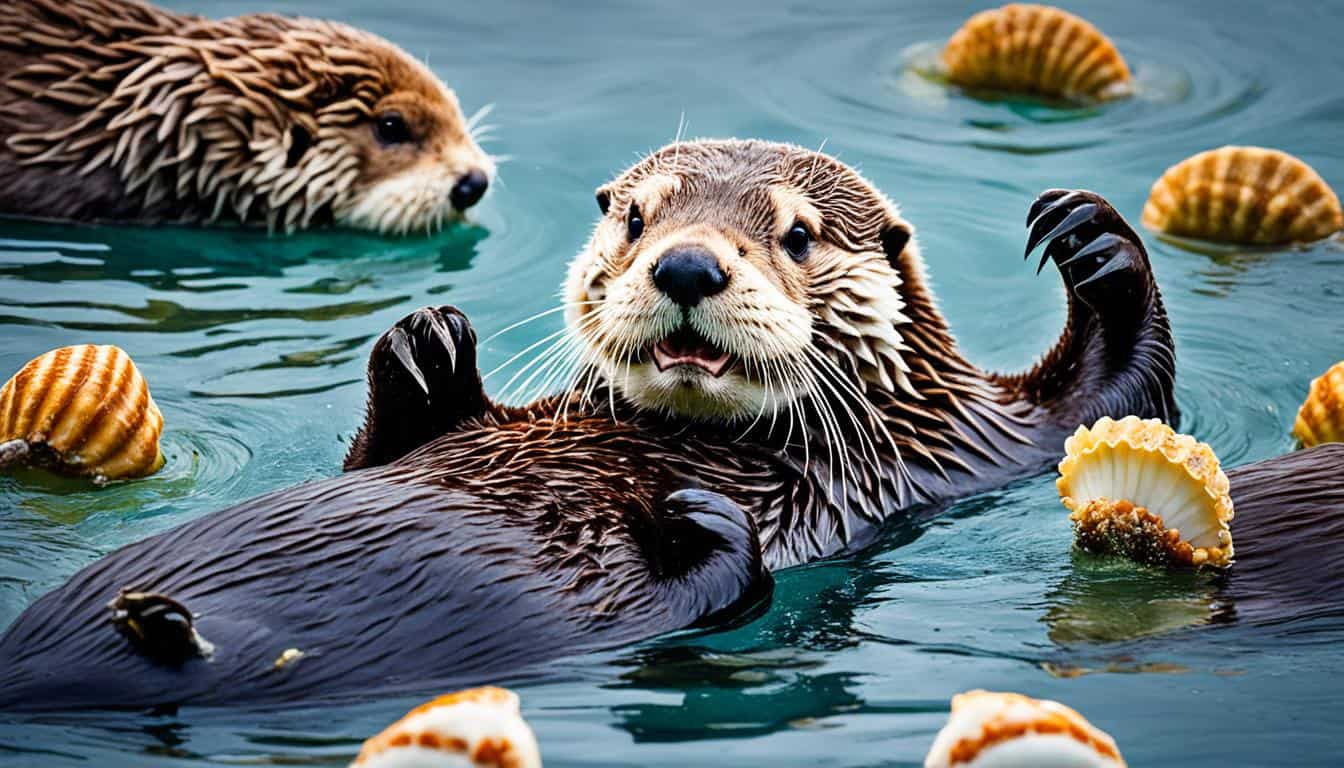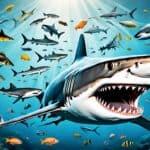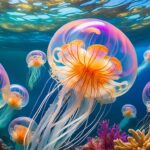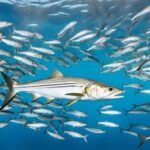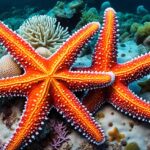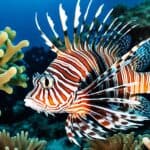Sea otters play a key role in marine ecosystems. So, what do they eat? These creatures have a varied diet that includes many marine animals and slow-moving fish. They eat about 25% to 30% of their body weight every day. This diet is important for keeping the ocean healthy.
They eat sea urchins, which helps kelp forests stay healthy. Southern sea otters are at risk, so knowing what they eat is crucial for their protection.
Understanding Sea Otter Diet
Sea otters eat a variety of marine life. Their diet changes based on where they live and the season. They mainly eat soft-bodied marine animals, which are key to their diet.
Sea otters pick certain foods based on what’s available. They focus on invertebrates because they are full of calories and nutrients. Each sea otter adjusts its eating habits to fit its environment.
Knowing what sea otters eat is important for their conservation. Many sea otter groups are declining. Protecting their homes helps meet their nutritional needs and keeps the ecosystem healthy.
| Food Type | Nutritional Benefits | Common Prey |
|---|---|---|
| Marine Invertebrates | High in protein and energy | Sea urchins, crabs, clams |
| Fish | Good source of omega-3 fatty acids | Groundfish, flatfish |
| Shellfish | Rich in vitamins and minerals | Mussels, oysters, abalone |
This table shows the variety in the sea otter diet and its importance for their health. Each food type adds something special to their diet, showing how nature balances marine ecosystems.
What do sea otters eat?
Sea otters play a key role in their ecosystems. They have unique eating habits shaped by their surroundings. Let’s explore what they like to eat to understand their importance.
Common Food Sources
Sea otters mainly eat marine animals without backbones. Their diet includes:
- Crabs
- Sea urchins
- Abalones
- Clams
- Mussels
- Snails
They have over 50 types of invertebrates to choose from. Sea otters pick their favorites, which helps them avoid fighting over food.
Feeding Preferences by Individuals
Sea otters have different eating habits based on where they live and their past experiences. For instance, one otter might love eating sea urchins, while another prefers clams. This makes their eating habits interesting and shows how adaptable they are.
What each otter eats can depend on what’s available locally. This shows how important local food is for their survival.

Sea Otter Feeding Habits
Sea otters have fascinating ways of finding and eating their food. They use tools like rocks to crack open shells. This skill helps them get to food that others can’t reach. They dive deep to the ocean floor to catch their food and eat while floating on their backs.
Sea otters need a lot of food to stay healthy because they have a high metabolism. They spend many hours foraging each day. Their diet mainly includes marine invertebrates and fish, which helps keep their ecosystems balanced.
Learning about sea otter eating habits helps us understand their role in the ocean. If there are fewer sea otters, sea urchins might grow too much, harming kelp forests. So, their eating habits are key to keeping the ocean healthy.
Key Sea Otter Prey Items
Sea otters play a big role in the ocean’s balance. They eat a lot of energy-rich sea creatures. This helps them stay active and healthy. By looking at what they eat, like crabs and sea urchins, we see how they help the kelp forests.
Marine Invertebrates
Crabs, sea urchins, and other sea creatures are key to the sea otter’s diet. These foods give them the energy and nutrients they need. By eating these, sea otters help keep the kelp forests healthy by controlling the sea creature populations.
Slow-Moving Fishes
Sea otters also eat slow-moving fish, adding variety to their meals. Fish like rock cod and kelp greenling are easy for them to catch. Even though fish aren’t their main food, they’re important for the sea otters’ diet and the health of the ocean.
FAQ
What do sea otters primarily eat?
Sea otters mainly eat marine invertebrates like crabs, sea urchins, and abalones. They also eat clams, mussels, snails, and some slow-moving fish. This variety makes their diet interesting.
How much food do sea otters need daily?
Sea otters need a lot of food because they have a fast metabolism. They eat about 25% to 30% of their body weight every day to stay energized.
What influences sea otter feeding preferences?
Sea otters’ eating habits change based on where they live and what food is available. Their choices also depend on their personal experiences and what they’ve learned to eat.
How do sea otters forage for food?
Sea otters use tools like rocks to crack open hard shells of their prey. They dive deep to the ocean floor to find food. Then, they eat while floating on their backs.
Why are sea otters important to their ecosystem?
Sea otters are key to keeping their ecosystem healthy, especially in kelp forests. They help control sea urchin numbers. This prevents urchins from eating too much kelp and harming the habitat.
Do sea otters have dietary specializations?
Yes, sea otters often prefer certain types of invertebrates. This choice helps them avoid fighting over food. They usually stick to a few of the many food options available to them.

